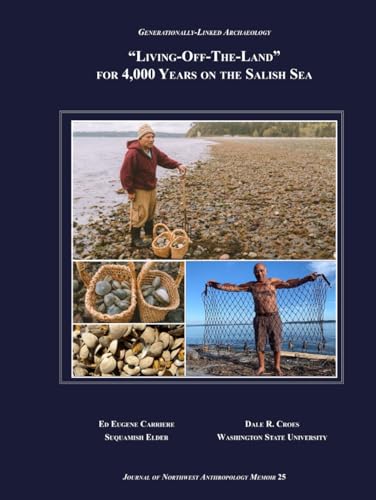JONA Memoir Series
The JONA Memoir Series offers a more thematic approach than the biannual issues, covering a range of topics relating to efforts of anthropological study in the Northwest.
Memoirs 1–6 are only available digitally.
Please contact our office if you are interested in obtaining one of these digital memoirs.
RELEASING SOON
JONA MEMOIR 27
BISON PROCUREMENT AND PROCESSING AT A COMPLEX HUNTING CAMP IN THE COLUMBIA PLATEAU OF EASTERN WASHINGTON
GERALD F. SCHROEDL
WITH CONTRIBUTIONS BY R. LEE LYMAN AND CARL F. GUSTAFSON
Archaeological excavations conducted at 45GA17 in the Little Goose Dam Reservoir in 1966 and 1968 produced substantial evidence, dating circa 2000 years B.P. for the procurement and processing of a minimum of eight modern bison (Bison bison). Other large mammals butchered at the site include elk, deer, pronghorn, and mountain sheep. Most animal bones and associated lithic tools and debitage, including cobble implements and anvil stones, were recorded as features ranging in size from 1 to 8 m2. Discrete concentrations and the great abundance of chipping debris demonstrate considerable tool making activities at the site. Few skull, spinal, or pelvic bones of bison occur at the site. Butchering of the front and hind limbs of bison is consistent with sites elsewhere in the Southern Plateau where the bones of artiodactyls were broken on either side their articulations and the joint discarded. A primary objective of the 45GA17 investigations was to determine if the site was a Plains style bison kill site not previously identified in the Columbia Plateau of eastern Washington. Detailed assessment and comparison of the faunal assemblage, the associated lithic tools and debitage, and the recorded contexts all suggest that the excavations represent a complex hunting camp rather than a primary kill site.
MEMOIR 26
MEMOIR 21
MEMOIR 20
Memoir 18
MEMOIR 17
Memoir 15
Memoir 12
Memoir 11
Memoir 9
JONA Special Reprints
The editors of the Journal of Northwest Anthropology invited twenty-five colleagues to share their perspectives on anthropological writing and publishing in an essay format. The purpose was to collect experiences, insights, and suggestions from experienced authors to assist other professionals in writing and publishing their own research. Nineteen of those invited accepted the challenge. The group includes academic and practicing anthropologists, archaeologists, and ecologists. Collectively, the group has written or co-written more than 150 books, 150 chapters in books, and more than 1,100 articles in professional journals. The essays contain personal writing-related anecdotes and philosophies, describe the changes occurring in the publishing industry, explore the benefits that can accrue from writing, and provide tips to improve one’s writing to increase the chances of getting published.
A special reprint of JONA Vol. 40(1), Tahoma Legends discusses the relationship that two American cultures, the Indian and non-Indian, have developed to the mountain, and how each has adapted its own legends to incorporate elements of the other culture. This work presents a collection of these legends, derived from a variety of anthropological, historical, and popular sources.
The legends are discussed in the context of two different cultural settings, one that calls the mountain Tahoma, the other Mount Rainier.






















